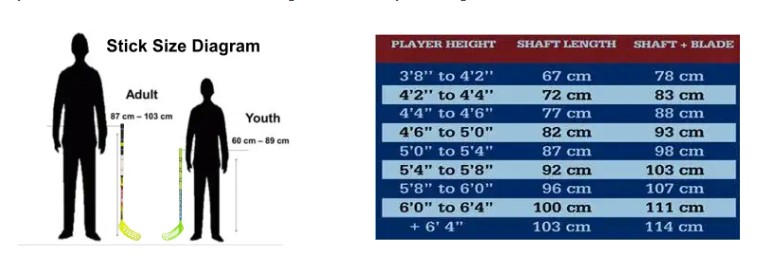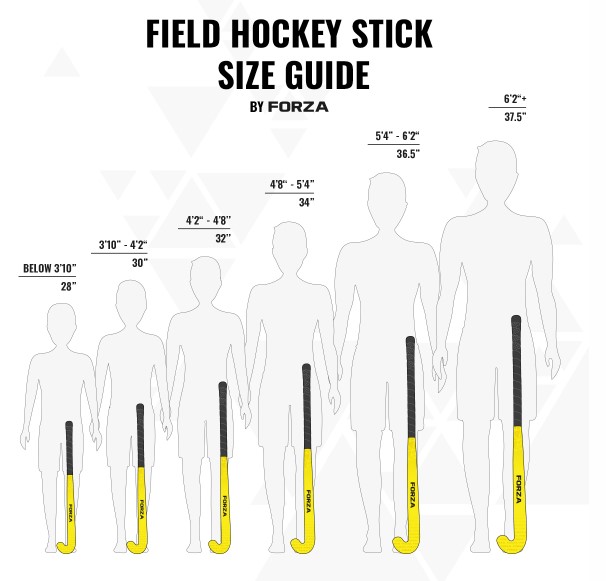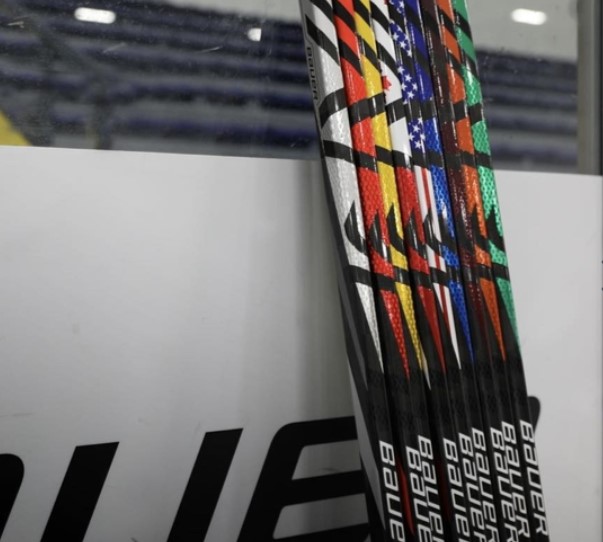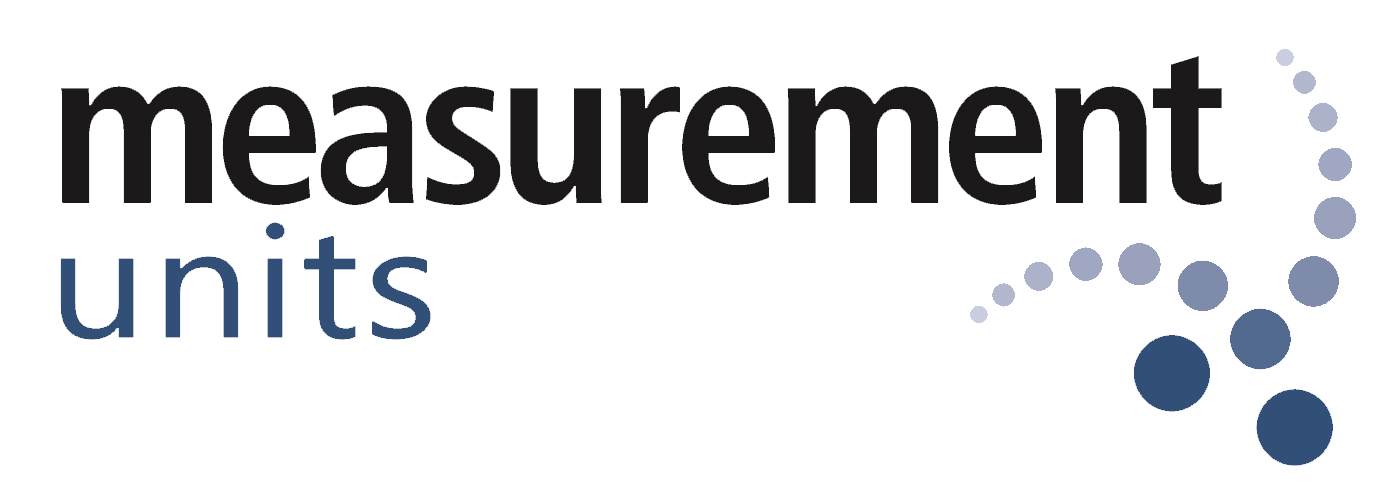Finding the right hockey stick is crucial for any player, whether you’re a beginner or a seasoned pro. The correct stick length ensures you have the proper balance, control, and power in your game. While hockey sticks are manufactured in a variety of sizes, measuring for the right stick isn’t just about grabbing one that feels comfortable in your hands—it’s about aligning the stick size with your height, playing style, and personal preferences.
For players in the UK, there might be slight variations in sizing standards compared to North America, and knowing how to measure properly can prevent any guesswork when purchasing a new stick.
In this guide, we’ll walk through the steps to measure for a hockey stick, ensuring you find one that suits your game perfectly.
Importance of Measuring for the Right Hockey Stick
The size of your hockey stick affects several aspects of your gameplay:
- Performance and Control: A stick that’s too long or too short can hinder your puck control and overall performance. A properly sized stick helps you maintain balance, manage your puck-handling skills, and execute accurate shots.
- Injury Prevention: Using an improperly sized stick can lead to poor posture and cause injuries, especially in your lower back and wrists. The correct stick length promotes good posture on the ice, reducing strain on your body.
- Position-Specific Needs: Different positions require varying stick lengths. Forwards may prefer shorter sticks for better puck handling, while defensemen often opt for longer sticks to increase their reach when defending against attacks.
In the UK, where ice hockey is gaining popularity, players of all levels must ensure their stick size is appropriate to help them stay competitive and reduce the risk of injury.
Tools Needed to Measure for a Hockey Stick
Before measuring for a hockey stick, gather these tools:
- Measuring tape or ruler: You’ll need this to determine your height and measure your stick.
- Hockey stick (if you already own one): If you already have a stick, measuring it against your height will help you determine if you need a different size.
- Skates (optional): Measuring while wearing your skates gives a more accurate reading because the added height affects how the stick will feel during gameplay.
Step-by-Step Guide: How to Measure for a Hockey Stick
Step 1: Determine Your Height
Start by measuring your height, which will give you the most accurate indication of which stick length you need. If you’re measuring yourself, stand upright with your back against the wall and have someone measure from the floor to the top of your head.
Measuring Height With Skates On:
- For the most accurate measurement, put on your hockey skates. Skates typically add 1-2 inches of height, which can slightly alter the stick length you need. Skates affect your posture and balance, so it’s essential to consider their height when sizing your stick.
Measuring Height Without Skates:
- If you’re purchasing a stick for general off-ice use or just to practice with, you can measure your height without skates. However, keep in mind that the stick might feel slightly longer or shorter once you’re on the ice.
Tips for Growing Children:
- If you’re buying a stick for a child or teenager, remember that they may grow quickly. Consider purchasing a stick that’s slightly longer, and trimming it down later. Some sticks come with extensions that can be added as the player grows taller.

Image source: floorballplanet.com
Step 2: Measure With the Stick
Once you have your height, it’s time to measure the stick. Stand the stick upright with the toe of the blade on the ground. The stick should reach somewhere between your chin and nose without skates, or to your chin when wearing skates.
Key Measurements:
- Without Skates: The stick should reach between your nose and chin when you’re standing flat-footed. This is a good general rule for both beginners and experienced players.
- With Skates: When standing in your skates, the stick should ideally reach up to your chin. This measurement gives you the best feel for how the stick will perform while you’re on the ice.

Image source: networldsports.com
Step 3: Customize Based on Preference and Playing Style
Not every player uses the same size stick—even players of the same height may prefer different lengths based on their personal playing style and position. Consider your role on the team and how you handle the puck.
- Forwards: Forwards typically prefer shorter sticks because they give better control over the puck and allow for quick, agile movements. A shorter stick helps with maneuverability and tight turns.
- Defensemen: Defense players may prefer longer sticks to help with poke checks, block passes, and maintain a better reach during defensive plays.
It’s important to test out various stick lengths during practice to see what feels most natural to you.

Image source: hockey.hps-sport-shop.de
Measuring for Different Age Groups
Junior Players
Junior hockey players (usually under 13 years old) need sticks that are specifically designed for their smaller size and height. Stick lengths for juniors generally range from 46 to 54 inches. As children grow quickly, it’s worth checking their height regularly to ensure their stick remains appropriately sized.
- Growth Consideration: Parents should consider buying a stick with a little extra length, allowing room for growth. However, avoid purchasing sticks that are too long as they can be cumbersome and may negatively impact the player’s technique.
Intermediate Players
Intermediate players (typically aged 11-15) often face rapid growth spurts, so their sticks need to be adjusted more frequently. Stick sizes for intermediate players typically range from 54 to 58 inches.
- Measuring Considerations: At this age, it’s especially important to measure with skates on, as the stick length will vary depending on whether the player is fully geared up.
Senior Players
Senior players (16 and older) generally use full-sized sticks, with lengths ranging from 58 to 63 inches. By this stage, a player will likely have a better understanding of their personal preferences regarding stick length and flexibility.
- Fine-Tuning the Stick: For senior players, it’s worth experimenting with minor adjustments to find the perfect stick length that complements their style of play.
Stick Flex and Length Considerations
Stick Flex: Flex refers to how much force it takes to bend the stick. It is typically measured as a number—lower numbers represent more flexible sticks, while higher numbers represent stiffer sticks.
- Flex for Junior Players: Junior players usually benefit from sticks with more flex, as it makes shooting easier. A general rule is to match the flex number to half of the player’s weight (e.g., a 100-pound player should use a stick with a 50-flex rating).
- Flex for Intermediate and Senior Players: Older players may prefer stiffer sticks, which offer more power in shots but require more strength to bend. A stiffer stick can benefit a stronger, more experienced player.
Adjusting Stick Length: If you find a stick that’s slightly too long, you can trim it to fit your height. Be cautious when cutting the stick, as this can also affect its flex. Alternatively, if the stick is too short, you can add an extension, though this may slightly affect the stick’s balance.
UK-Specific Sizing Considerations
When it comes to hockey sticks, the UK tends to follow similar sizing standards to North America. However, certain brands that are popular in the UK may have slight variations in sizing, so it’s worth checking the manufacturer’s guidelines before purchasing.
- UK Brands vs. Global Brands: Many players in the UK use brands like Bauer, CCM, and Warrior, which offer internationally standardized sizes. If you’re purchasing from a local retailer, ask for their advice on UK sizing.
- Custom Fittings: Some retailers in the UK offer custom stick fittings, allowing you to get a stick perfectly tailored to your height and playing style.
Conclusion
Choosing the right hockey stick size is essential for maximizing your performance on the ice. By taking accurate measurements and considering your position, skill level, and personal preferences, you can ensure your stick is perfectly suited to your game.
Whether you’re a junior player just starting out or a senior player refining your craft, the right stick length can make all the difference.If you’re unsure about what size to choose, it’s always a good idea to visit your local UK hockey store and consult with a professional who can guide you based on your specific needs.
Frequently Asked Questions (FAQs)
Your hockey stick should reach between your chin and nose when standing in regular shoes, or up to your chin when wearing skates. The right length depends on your height, playing style, and position.
To measure, stand the stick upright with the toe of the blade on the ground. It should reach between your chin and nose without skates, or to your chin with skates. Adjust based on your height and position.
For field hockey, measure from the floor to your hip bone. The top of the stick should reach just below your waistline. Choose a stick size based on your height and playing style for optimal control.
The standard length for adult hockey sticks is typically 58 to 63 inches. Junior sticks range from 46 to 54 inches. The length should be adjusted to fit your height and preference for on-ice.
